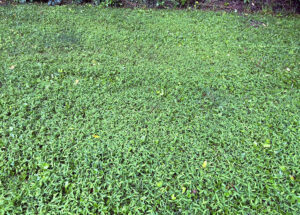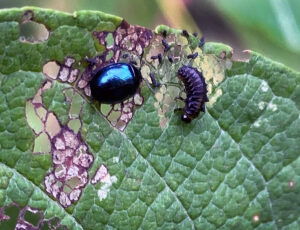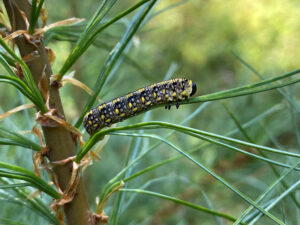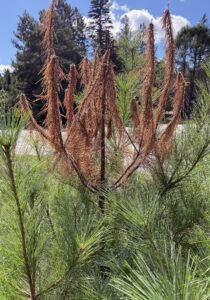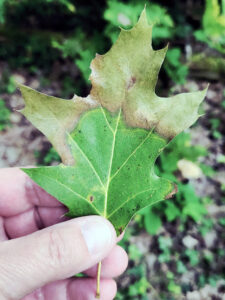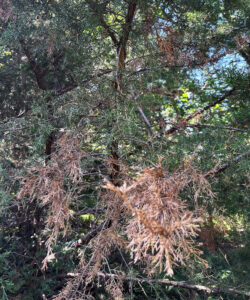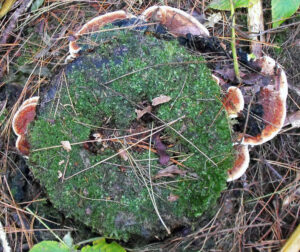
Heterobasidion root disease grows from an infected tree stump. / Photo Credit: Wisconsin DNR
By Kyoko Scanlon, DNR Forest Pathologist, Fitchburg
Kyoko.Scanlon@wisconsin.gov
Fall is a great time to look for mushrooms, including conks from trees infested with Heterobasidion root disease (HRD).
Considered one of the most destructive diseases of conifers in the northern hemisphere, the fungus causing HRD is very difficult to eradicate once established. Infestation of a conifer stand may significantly impact stand management, making early detection of the disease extremely important.
Continue reading “HRD Conks Found In Different Shapes And Sizes”


